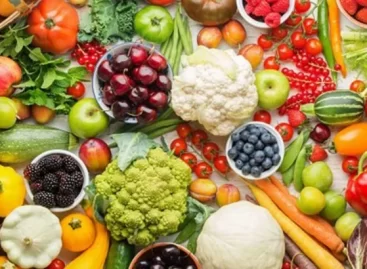New report on urban farming: at leat 30 percent of cities’ fruits and vegetables should be produced locally by 2030
Two thirds of the world’s population are predicted to be living in cities by 2050 and consuming 80 percent of all food produced, so there is an evident need for fresh, healthy and locally sourced fruit and vegetables. Urban agricultural technology should be put into use to help produce at least 30 percent of cities’ fruit and vegetables by 2030, thus increasing food resilience. This was one of the key points released in a report published by Tony Blair Institute For Global Change.
Both indoor vertical farms, which use hydroponics instead of soil, and precision greenhouses, which use artificial intelligence to analyze plants and adjust their growing conditions, benefit from high yields, frequent harvests, little water consumption and are not dependent on outdoor growing conditions. Although they are most suitable for producing leafy greens and vine fruits, precision greenhouses are also currently experimenting with blueberries, raspberries, strawberries and other fruits. In addition, urban gardens can grow all types of fresh fruit and vegetables.
By leveraging innovations in urban agricultural technology (“urban agtech”), city leaders can diversify their food sources, thereby increasing their food resilience in the face of the growing threat of insecurity from general and nutritional scarcity – in particular, the lack of essential micronutrients like vitamins and minerals. And they can do so while dramatically minimising the use of pesticides or chemical fertilisers and taking up much less land than required by conventional agricultural methods. Land that would otherwise be used to feed growing urban populations can instead be conserved as carbon sinks and wildlife habitat.
In addition, urban agtech can bring badly needed investment and desirable jobs to neighbourhoods. Derelict buildings and vacant warehouses can be converted into thriving businesses that provide nearby residents with fresh, healthy produce that travelled minutes, rather than days or weeks, to reach them, thereby preserving taste and nutritional value. These facilities will offer skilled jobs in comfortable, climate-controlled settings, drawing in a new pool of workers.
Cities should better concentrate on creating resilient food systems. Governments should help urban-agtech entrepreneurs scale their businesses and support further technological innovation. The report’s ten point plan can be a valuable source of inspiration for the elaboration of progressive urban food politics.
Szöllősi Réka, elelmiszervilag.hu
Related news
France imposes import ban on several fruits
🎧 Hallgasd a cikket: Lejátszás Szünet Folytatás Leállítás Nyelv: Auto…
Read more >Poor fruit harvest weighs on the pálinka sector
🎧 Hallgasd a cikket: Lejátszás Szünet Folytatás Leállítás Nyelv: Auto…
Read more >Fodder fruit sold as a premium: double quality in Romania, reputational risk in the region
🎧 Hallgasd a cikket: Lejátszás Szünet Folytatás Leállítás Nyelv: Auto…
Read more >Related news
Fidelity Kitekintés 2026: Ne becsüljük alá az inflációt!
🎧 Hallgasd a cikket: Lejátszás Szünet Folytatás Leállítás Nyelv: Auto…
Read more >Company Trend 2025 – domestic businesses under strong pressure, in a negative trend
🎧 Hallgasd a cikket: Lejátszás Szünet Folytatás Leállítás Nyelv: Auto…
Read more >Plastic packaging waste in the EU: 35.3kg/capita
🎧 Hallgasd a cikket: Lejátszás Szünet Folytatás Leállítás Nyelv: Auto…
Read more >







